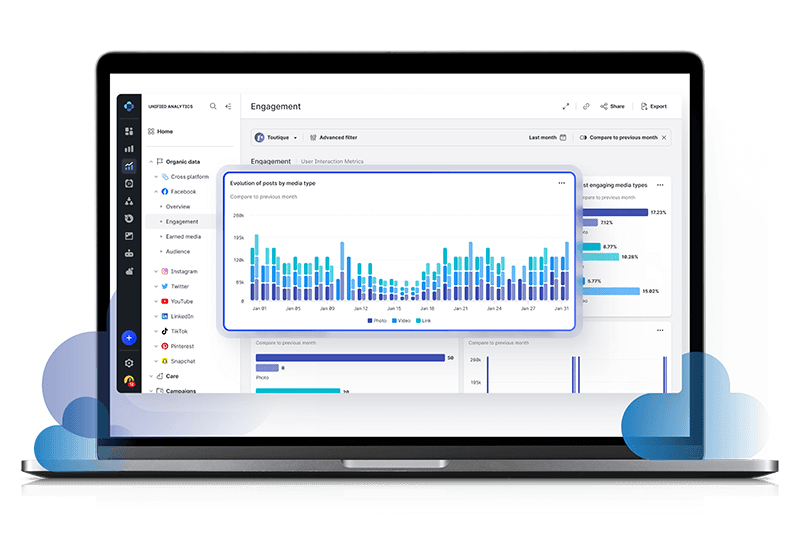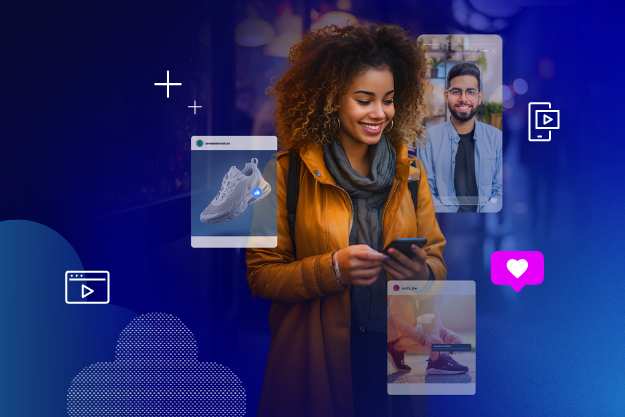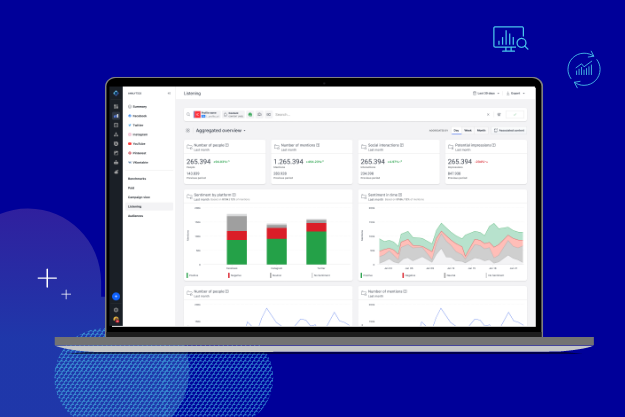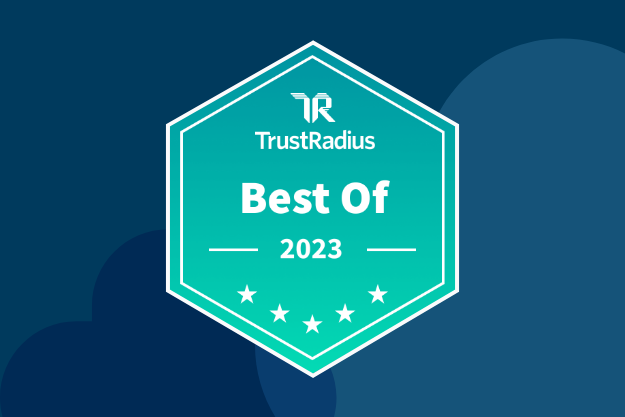It's one of the biggest questions marketing teams have when shopping for the right solution for their social media strategy: Should we go for the comprehensive, all-in-one platform, or assemble a toolkit of specialized, "best-in-class" point solutions?
For organizations with diverse social media requirements – especially enterprise-level brands – the decision is often a tough call. There's no universal answer because your brand is unique. What works for your competition may not align with your objectives and goals.
Let's delve into the biggest advantages of the all-in-one solution to help guide that decision-making process and arm you with the information you need to sell your preferred platform to the C-Suite.
Advantages of an all-in-one solution for social media management
When you begin your search to determine if an all-in-one or set of point solutions is the best option for your brand, you may find yourself suffering from information overload. Let's try to make it simple and consider the following core elements where an all-in-one solution is likely to be the best fit for your needs.
1. Cost-efficiency
This may be the most obvious — and, for many brands, the most important — factor to consider. When it comes down to it, it’s tough to get around the fact that the all-in-one solution will almost inherently have a lower total cost of ownership than you’ll have with multiple solutions doing the same work.
The financial advantages of an all-in-one platform go beyond merely pooling your expenses into a single invoice — though that has an impact. You also have other vital factors to consider:
License or service fees: When using multiple point solutions, you’ll be paying license and service fees to each of those companies. Those costs can scale up quickly when you start figuring out how many people you need to use each tool. But with an all-in-one solution, you’ll likely pay one price to get members of your team access to the tool.
Training and onboarding: With multiple tools, each having unique interfaces and functionalities, you’ll have to train your team on each one, which is time-consuming and mentally taxing. That may not cost you in straight dollars, but time is money. Opting for an all-in-one solution means a single, focused training session to get any team up to speed, saving you both time and mental bandwidth.
Cost-benefit analysis: If you can get a single tool that solves most of your needs while saving you money — perhaps even a significant amount — that makes a compelling case for its adoption, especially for budget-conscious brands.
2. User Experience
Ease of use is not just a feature; it’s a necessity. It’s tempting to think that using multiple specialized tools will grant you superior capabilities, but each new product you use comes with its own set of challenges. The more you bring in, the higher the chances you find one that isn’t nearly as user-friendly as you’d like. And that can cause problems.
Each specialized tool adds another layer of complexity to your workflow. Every time you add a new tool to your mix, the odds of encountering one that disrupts user experience grows exponentially — which negates the benefits you were seeking out in the first place. Once managing a collection of point solutions becomes more cumbersome than engaging directly within social media platforms, you've essentially defeated the purpose of employing third-party tools. An all-in-one solution should streamline your workflow, not complicate it.
The main ease-of-use appeal of an all-in-one solution is doing all the individualized work needed across various social media platforms from a unified interface, with the customizations you need. This eliminates the need to switch between platforms and tools — which may or may not integrate in any real way — ensuring a more coherent workflow that saves time and reduces errors.
3. Unified analytics and workflows
One of the reasons brands often end up going with a third-party social media management platform in the first place — rather than just managing social through the platforms themselves — is that each is its own silo. All the marketing your brand does through social media channels like Meta, X (formerly Twitter), TikTok, and YouTube lives within that platform, and you can only measure it there. This can make it difficult and cumbersome to fully understand how your social media strategy is playing out.
When you use various point solutions, you basically recreate that same problem, but this time on third-party platforms that don’t work together. So, your teams end up managing disparate tasks — be it influencer marketing, social listening, or customer care — in isolated environments. Then, you have to pull analytics and dashboards separately from each place, adding to the complexity.
Meanwhile, one of the most compelling advantages of having an all-in-one tool is having a single place to pull analytics around what’s working, saving time and giving you a more holistic view of what’s happening around your brand. When marketing, commerce, and care teams can have the same view of customer interactions, it not only streamlines internal operations but also leads to an improved experience for the customers themselves.

Source: Emplifi Unified Analytics
4. Accountability and support
Ideally, you wouldn't have any problems with your SaaS solutions. However, we all know that even the best platforms sometimes require maintenance and customer support. And when you need help, you want to get it as easily and quickly as possible so your team can get back on track.
With multiple point solutions, you also get multiple disconnected customer support teams. Plus, the support you receive can change depending on your level of engagement and expenditure with each vendor. All of that, fairly or not, impacts what sort of support you get when you need it.
Having a comprehensive solution means it's clear where you need to go for troubleshooting and support, and you have just one team to build a relationship with. They're experts in everything you're doing and can offer help anywhere you need, meaning that help is just one email or phone call away.
Even with solutions that call themselves “all-in-one,” though, support can vary quite a bit from one vendor to another. It’s not hard to find those that will charge you separate fees for support, not including it as part of your package. And it might be worth questioning how “all-in-one” the solution can be if the help you need to ensure it’s working properly isn’t part of what they offer.
Other considerations for your evaluation
It’s important to note that, despite the above advantages of an all-in-one platform, every brand should evaluate their unique needs and make a call based on several factors when deciding the best route to take when it comes to a social media marketing platform.
Here are some of the factors where a more specialized approach could be helpful:
Niche requirements: If your brand has specific or unique needs that an all-in-one solution isn’t well-equipped to help with, a specialized point solution built with that use case in mind might be the optimal choice. You might also consider a hybrid approach, combining an all-in-one platform with a point solution to address that specific need.
Budget constraints: For small companies, budget and resource concerns could mean it's unrealistic to be able to use all the bells and whistles that come with an all-in-one solution. In that case, it might make sense to be more targeted in your buys, though it's worth noting that some all-in-ones offer modular options, allowing for scalability as needs evolve.
Risk diversification: For organizations especially averse to risk — often with respect to cybersecurity — a diversified toolkit may offer additional layers of protection. This concern emphasizes the need to closely vet the security protocols of any all-in-one solution you consider.

The takeaway
Going with an all-in-one solution or multiple point solutions is a big decision your marketing team will have to make when you look into how to manage the wide spectrum of social media. For most enterprise brands, an all-in-one solution likely makes a lot of sense. But be sure to do your homework.
In some cases, the smaller option could work for your brand. Getting that right will go a long way toward ensuring your social media strategy is successful.







































